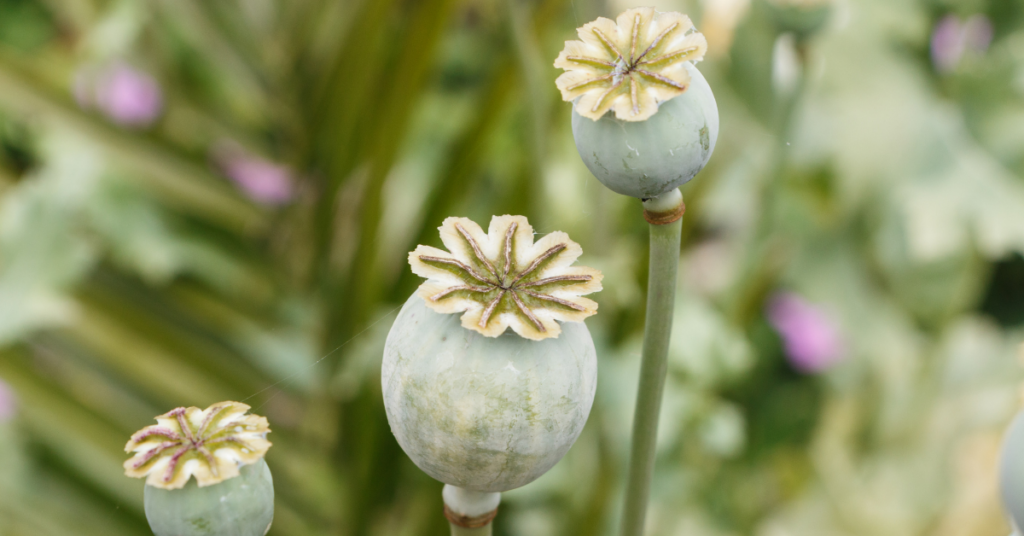Do these plant derivatives sound familiar to you: cannabis, mandrake, and alcohol? What about opium? Opium is derived from the poppy seed plant and is the most prolonged pain reliever medication used. Morphine was isolated from opium by Friedrich Serturner in 1805. For over two centuries, the prescribed drug has been implemented through various delivery symptoms such as through needles, oral, and pill form. Serturner named the substance morphine after the god of dreams, Morpheus, since he was associated with sleep and dreams. Morphine symptoms or side effects are concluded to cause insomnia and hallucinations. Serturner did become addicted to the drug but excused his dependence on it by stating that he wanted to document all the side effects and withdrawal symptoms as an experiment before giving it to the public. However, it is recorded that he gave it to his family members, including his dogs. Additionally, the poppy plant Papaver somniferum, which produces opium and is a powerful narcotic including derivatives like morphine, codeine, and heroin, is where the term “narcotic” stems from.
The First Opium War
Various notable opium wars took place in the past. Thanks to the British Empire, the East India company smuggled opium into China. Opium became socially devastating in China. By the early 1800s, 10 to 12 million opium addicts were recorded. The first opium war began in 1839 and was fought over trading rights like open trade. Between the smuggling and the number of reparations for the expenses of the war, the society of China was being destroyed.  The second opium war in northern China included legalizing the opium trade. The events caused many to suffer and pay for a war that groups of official governmental status established. Still, China stayed stagnant as handling all trade with imperial powers added significance at the time.
The second opium war in northern China included legalizing the opium trade. The events caused many to suffer and pay for a war that groups of official governmental status established. Still, China stayed stagnant as handling all trade with imperial powers added significance at the time.
Civil War Morphine Addiction
Unfortunately, morphine proved to be more addicting than opium. The use of the hypodermic needle in 1853 facilitated the immediate delivery of morphine to wounded U.S. Civil War soldiers on the battlefield. An immense amount of morphine, around ten million doses, was estimated to be dispensed to the soldiers. The pain reliever drug was prescribed for female mood disorders, anxiety, depression, and even specific bodily infections during the war. Once the war was over, the soldiers were psychologically distraught, fighting mental and physical pain, and many men caved to depending on morphine. An estimated 400,000 soldiers were recorded to be deemed addicted to the drug. The highly addictive properties of morphine caused more harm than good during the war. Although morphine helped many continue to fight with an injury, many faced death from addiction. The overuse of morphine did produce the U.S’s first drug addiction epidemic. Society believed that since it was used for medical purposes, it was considered to be safe with little to no side effects. Even today, the pain reliever is widely used and consumed by over 17% of the population. While the U.S. consists of nearly 5% of the world’s population, it consumes 80% of its opioid supply. Indeed, high consumption in America leads to an increasing addiction rate.
How to Help Those Fighting Morphine Addictions
Quitting this drug can be difficult without help. Fortunately, our South Florida Detox Center offers medical detox for various substances, including a morphine detox, to help people struggling with abuse. We will help you get through withdrawals without relapsing. Patients can rest easy knowing that they are in hands that care about truly healing from addiction. Whether it’s medical detox or inpatient drug treatment that you need, Evoke Wellness at Miramar, can help. Contact Evoke Wellness today at 833-819-6066 to learn how to get started or talk to one of our specialties to get your questions answered today! Further Reading:


